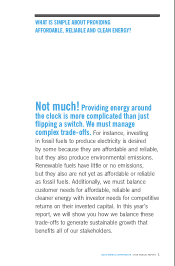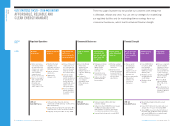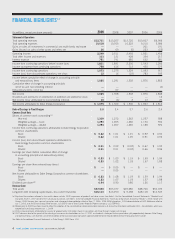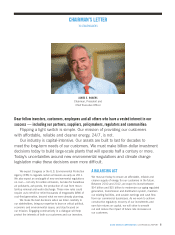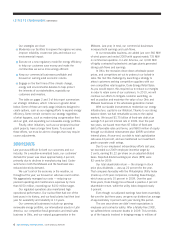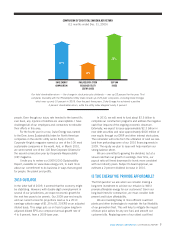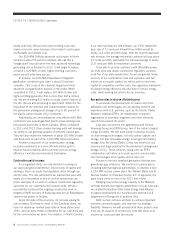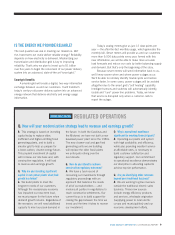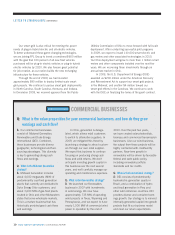Duke Energy 2009 Annual Report Download - page 13
Download and view the complete annual report
Please find page 13 of the 2009 Duke Energy annual report below. You can navigate through the pages in the report by either clicking on the pages listed below, or by using the keyword search tool below to find specific information within the annual report.
12 DUKE ENERGY CORPORATION / 2009 ANNUAL REPORT
LETTER TO STAKEHOLDERS (CONTINUED)
In January 2010, we announced our first commercial
photovoltaic solar venture, the Blue Wing Solar Project in
San Antonio, Texas. This 14-MW, 139-acre solar photovoltaic
farm includes a 30-year power purchase agreement with
San Antonio-based CPS Energy, one of the largest municipal
utilities in the United States. Our solar strategy also involves
joint development of commercial projects in the United States
with China-based ENN Group.
Last year, the U.S. Department of Energy awarded us a
matching grant worth $22 million to design, build and install
one of the nation’s first demonstrations of energy storage at
our 153-MW Notrees wind farm in Texas. If it proves to be
cost-effective, we could adopt similar storage solutions at
some of our other power plants.
Also in 2009, ADAGE, the biopower company we own
with AREVA, began the permitting process to build two
55-MW carbon-neutral biomass plants in Florida that will
generate electricity by burning wood waste. In early 2010,
ADAGE and John Deere announced an alliance for collecting,
bundling and transporting wood debris from regional logging
operations in western Washington to fuel a proposed 55-MW
biomass power plant in that region.
Finally, we became the lead investor in GreenTrees,
a program that aims to offset carbon emissions through the
reforestation of 1 million acres in the southeastern United
States. Our initial investment funded the planting of more
than 1 million trees on approximately 1,700 acres
in Arkansas.
WHAT IF WE’RE WRONG ABOUT CLIMATE CHANGE?
I have described our strategy for providing our customers with
affordable, reliable and cleaner energy.
But what if we’re wrong about the imperative to reduce
CO2 and other greenhouse gas emissions? That is the subject
of a high-profile debate, as the integrity of scientific research
supporting the threat of climate change continues to
be scrutinized.
I have thought about this long and hard. What if we
are dead wrong? Would the course we’ve charted for our
company and our customers be misguided? Would we
change our plans if it were unlikely that Congress or the
EPA would ever regulate carbon emissions?
My answer is “no.”
A: Our financial objectives include
growing our earnings and dividends,
allocating capital efficiently and
earning competitive returns, while
maintaining the strength of our balance
sheet. Our financial strategy supports
our historical focus of providing
affordable, reliable and increasingly
clean energy to our customers, while
earning good returns for our investors.
Q: How do you balance short-term
economic pressures with the long-term
investments needed to meet the needs
of your customers, and achieve
business growth?
A: We achieve that balance by
maintaining flexibility in our allocation
and spending of capital. In 2010,
about $3 billion is committed to
building our two cleaner-coal plants
and two gas plants in our regulated
operations, and renewable wind
and solar projects being built under
long-term contracts in our commercial
businesses. About $2 billion is
allocated for customer additions
and maintenance costs. In the short
term, we have some flexibility on
the timing of this spend.
We have the greatest flexibility
in allocating our discretionary capital.
Our 2010 plan includes $200 million
of growth capital that has not yet
been designated to specific projects.
Additionally, we have broad ranges
for discretionary spending in 2011
and 2012, the years in which we will
be deploying more capital to complete
the fleet and grid modernization
projects in our regulated operations.
As we demonstrated in 2009, we
have the flexibility to increase or
decrease this discretionary spending
as the environment dictates.
STRATEGIC FOCUS FINANCIAL STRENGTH
Q: How will Duke Energy maintain its financial strength?


